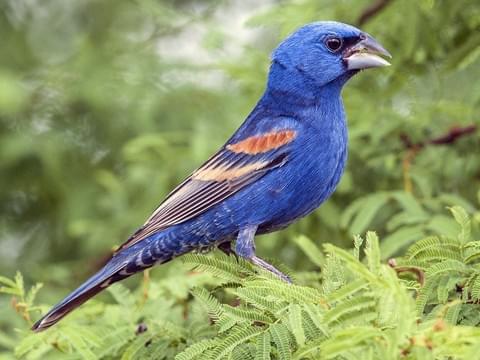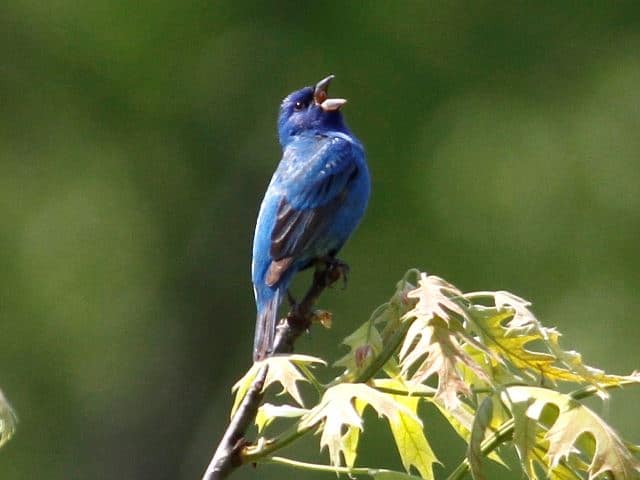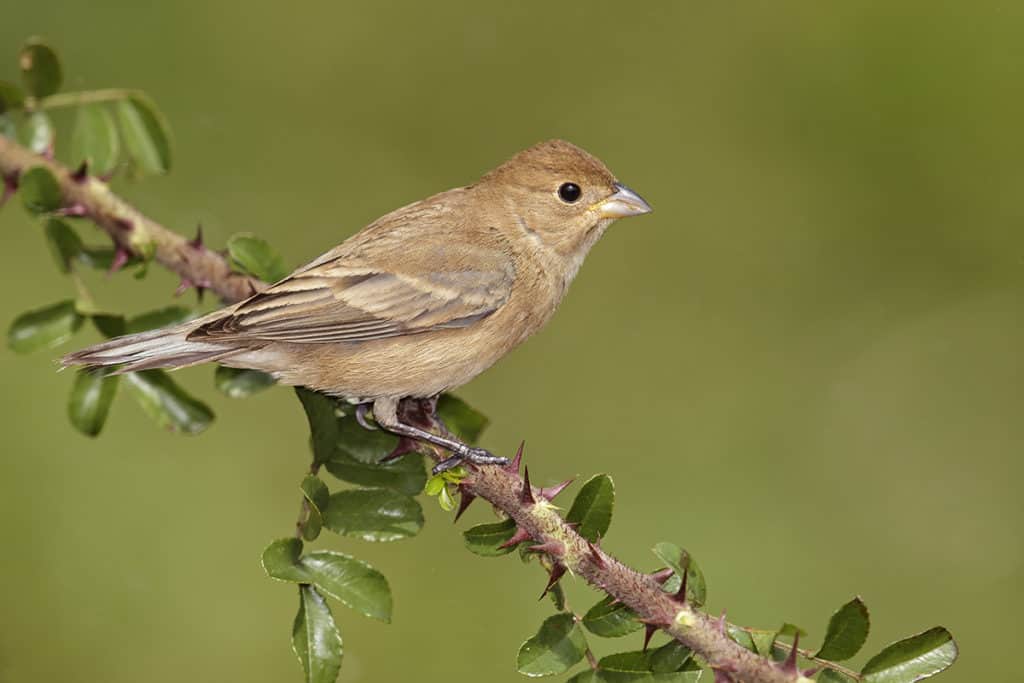Blue Canaries

The all blue male Indigo Bunting sings with cheerful gusto and looks like a scrap of sky with wings. Sometimes nicknamed “blue canaries”, these brilliantly colored yet common and widespread birds whistle their bouncy songs through late spring and summer all over eastern North America. Look for Indigo Buntings in weedy fields and shrubby areas near trees, singing from dawn to dusk atop the tallest perch in sight or foraging for seeds and insects in low vegetation. These birds, when traveling in groups, can be referred to as a decoration, a mural or a sacrifice of buntings!

Indigo Buntings migrate at night, using stars for guidance. The birds possess an internal clock that enables them to continually adjust their angle of orientation to a star, even as that star moves through the sky. After spending most of their time in Florida, the Caribbean and Central America during the winter months, they spread across the eastern United States and portions of Canada during breeding season.
They learn their songs as youngsters, from nearby males but not from their fathers. Buntings a few hundred yards apart generally sing different songs, while those in the same “song neighborhood” share nearly identical songs. A local song may persist up to 20 years, gradually changing as new singers add new variations.

While what we see as a sky-blue plumage in these birds is not entirely accurate. Indigo buntings actually sport black feathers, it is the diffraction of light that gives these beautiful birds the blue coloring we see when viewing one of them in person. This can often make them appear in a number of different shades ranging from turquoise to black, depending on lighting conditions. Females feature plain brown feathers and are seen far less often, but are responsible for caring for the eggs and young.
These beautiful songbirds are unmistakable at any backyard bird feeder and pictures captured become instantly shareable. We’d love to see photos of indigo bunting sightings in your backyard!
Sources:
https://gilligalloubird.com/blogs/news/5-interesting-facts-about-the-indigo-bunting
https://www.allaboutbirds.org/guide/Indigo_Bunting/overview
https://www.nationalgeographic.com/animals/birds/i/indigo-bunting/
https://www.audubon.org/field-guide/bird/indigo-bunting
https://www.carolinabirdclub.org/gallery/Sonis/inbu.html
